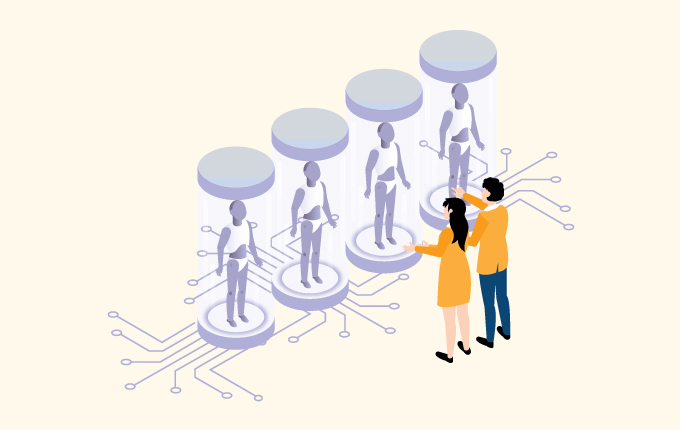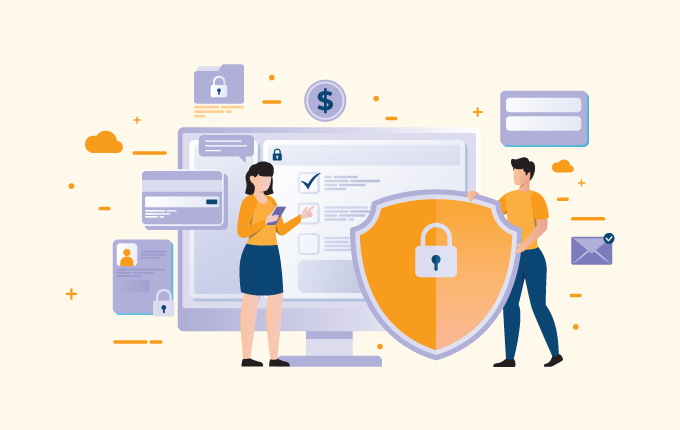Business IntelligenceCloud ServicesIT Consulting & StrategySecurityTech Support & Managed IT ServicesTelecommunicationsConstructionEducationFinanceHealthcareLegalNon-ProfitsReal EstateStartups
When it comes to cybersecurity, the best time to improve coverage and protection is before you get attacked, not after. If you take a reactive approach, you’re effectively waiting until someone steals from you to make things better. The problem with that is that you’ve already been affected by the problem. Your customers will be concerned that you can’t keep their data safe and, not only that, but you run the risk of regulatory sanctions.

It’s one of the reasons why we focus so much on cybersecurity. The more you’re aware of what you can do to stay protected, the more likely you are to be proactive about it.
As cyberattacks become more complex, there’s a growing need to use protection that’s capable of navigating that complexity. Endpoint detection and response (EDR), as well as extended detection and response (XDR), are ways of meeting that growing complexity head-on. Let’s explore.
What is EDR?
As mentioned above, EDR stands for endpoint detection and response. As the name implies, it’s a cybersecurity approach that involves actively monitoring the various endpoints that are on your network. Endpoints are anything that is connected to your network, from computers to printers, IoT devices to telephones. By actively monitoring these endpoints, you’re aware of any problems that could occur the moment they happen giving you a better chance to mitigate any potential damage.
What is XDR?
XDR stands for extended detection and response. Similar to EDR, XDR involves active monitoring of your network. But, unlike XDR, it goes beyond the endpoints to monitor your entire network, including factors like identity management, your business clouds, and any apps you use.
The goal is similar to EDR – to catch any possible cyberattacks the moment they happen, rather than after the damage has been done. With XDR, you’re gaining total visibility into all the systems that your business relies on. The result is that there are no dark spaces on your network, places where you can’t monitor because they’re not an endpoint (for example). This unified view allows you to stay on top of all that’s going on in your business.
How do these come together?
XDR and EDR are similar but different. Effectively, XDR is the next generation of EDR. It builds on the idea that you need to monitor, detect, and respond to threats as quickly as possible, but it goes beyond simply watching the endpoints.
With XDR, you’re watching everything that’s going on on your network at all times. You know if something’s funky with your invoicing app (for example) the second something happens. XDR then empowers you to respond to the threat immediately, limiting the damage.
How do they bolster the security resilience of the organizations?
Both XDR and EDR provide peace of mind through active monitoring. As we keep saying, the more you can stay ahead of potential cyberattacks, the better prepared you’ll be when one happens.
Even if something happens on a weekend or during the middle of the night, both XDR and EDR work quickly to make sure that you’re covered. Action is taken immediately, not when the tech folks arrive the next morning.
Among other things, this gives the ability to reassure your customers that you’re prioritizing their data and keeping it safe. It doesn’t take much for trust to be lost these days, especially not with the sheer number of ways that a business can be protected.
XDR in particular is helpful in this respect because if someone accidentally clicks on a link in a phishing email, the system will pick up on the malicious code (or whatever) and act. Not only that, but they can pick up on suspicious activities, like multiple failed login attempts from legitimate accounts. This can be a strong indication that someone is trying to access your system, but if you’re not monitoring, you’ll miss it.
On top of advanced monitoring and detection, when you have a platform that actively collects data from around your network, you have everything you need to do a post-mortem of incidents to learn more about what happened, how you responded, what could be improved in your response, and what needs to be done differently next time. Having a comprehensive dataset to look back on, helps better prepare you for future incidents, come up with better solutions to prevent them from happening again, and possibly discover areas where staff may need training.
Want to learn more about XDR and EDR?
If you’re looking to bolster your security profile in 2023 and think either EDR or XDR may be right for you, let’s talk. Our experts can help you better understand the needs of your business and suggest a solution that works best for you. And, if you can’t implement it, we can do it for you.
Contact us today to learn more.
 January 26, 2023
January 26, 2023 Manhattan Tech Support
Manhattan Tech Support




